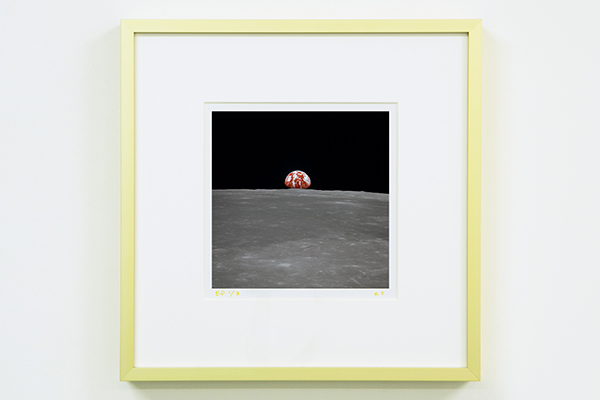"The Beginning of the End of the World"
If the light is strong, the shadow is thick.
When standing in the middle of a strong light, the presence of a shadow tends to be forgotten. In the period between the ‘60s to the ‘80s, when we were headed from high economic growth towards the eventual “bubble economy”, people were enthralled by the dream of a bright future led by science. But meanwhile, the shadow’s presence grew steadily but surely. Matsufuji references Space Battleship Yamato, Godzilla, and Astro Boy to present his worldview of cyclical endings and beginnings. A city, regenerating again and again whilst continuing to expand and increase, is itself a metaphor for a living organism. Associated with a light of danger, the uranium glass city is both sinister and beautiful. It captivates those who lay eyes on it. While a thick shadow trails behind us, bearing the price of what we have obtained, we simultaneously live out a story that cycles through life and death, destruction and rebirth – the beginning and the end.
Seiko Yoneda
Curator of Notojima Glass Art Museum
「世界の終わりの始まり」
光が強ければ、影もまた濃い。
強い光の中にいると、影の存在をしばしば忘れてしまう。高度経済成長からバブルへと向かった60~80年代は、人々が夢見た「科学がもたらす明るい未来」を享受しながらも、それが落とす影がじわじわと存在感を増した時代ではなかっただろうか。「宇宙戦艦ヤマト」や「ゴジラ」、「鉄腕アトム」などの世界観を参照しながら、松藤は「世界の終わりの始まり」のイメージを提示する。新陳代謝を繰り返しながら拡大、増殖を続ける都市は、それ自体が生命体のメタファーである。危険な光を内包するウランガラスの都市は、禍々しくも美しく、見る者を魅了する。生と死、破壊と再生、繰り返される終わりと始まりの物語と、我々が手にしたものの対価という濃い影を背後にまとって。
石川県能登島ガラス美術館学芸員
米田晴子

"The Beginning of the End of the World"
Gallery O2, Kanazawa, Japan
January 11 - Febrary 9, 2019
「世界の終わりの始まり」
ギャラリーO2、金沢
2019年1月11日〜2月9日

"Beginning of Contradiction #02"
Pencil on paper
42 x 42 cm (HxWxD)

"Beginning of Contradiction #04"
Pencil on paper
42 x 42 cm (HxWxD)

"Beginning of Contradiction"
Cast uranium glass
30.5 x 41 x 42 cm (HxWxD)

2199 (Apollo 11)
Digital print
30 x 30 cm

2199 (Apollo 17)
Digital print
30 x 30 cm

"The Beginning of the End of the World"
Blown uranium glass, Luehdorfia Japonica (the Gifu butterfly) in the period between the '60s to the '80s, and a pentagon wood table with filament lamp
150 x 337 x 321 cm (HxWxD)


© Koichi Matsufuji, All rights reserved